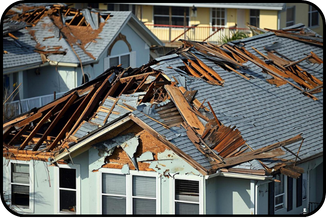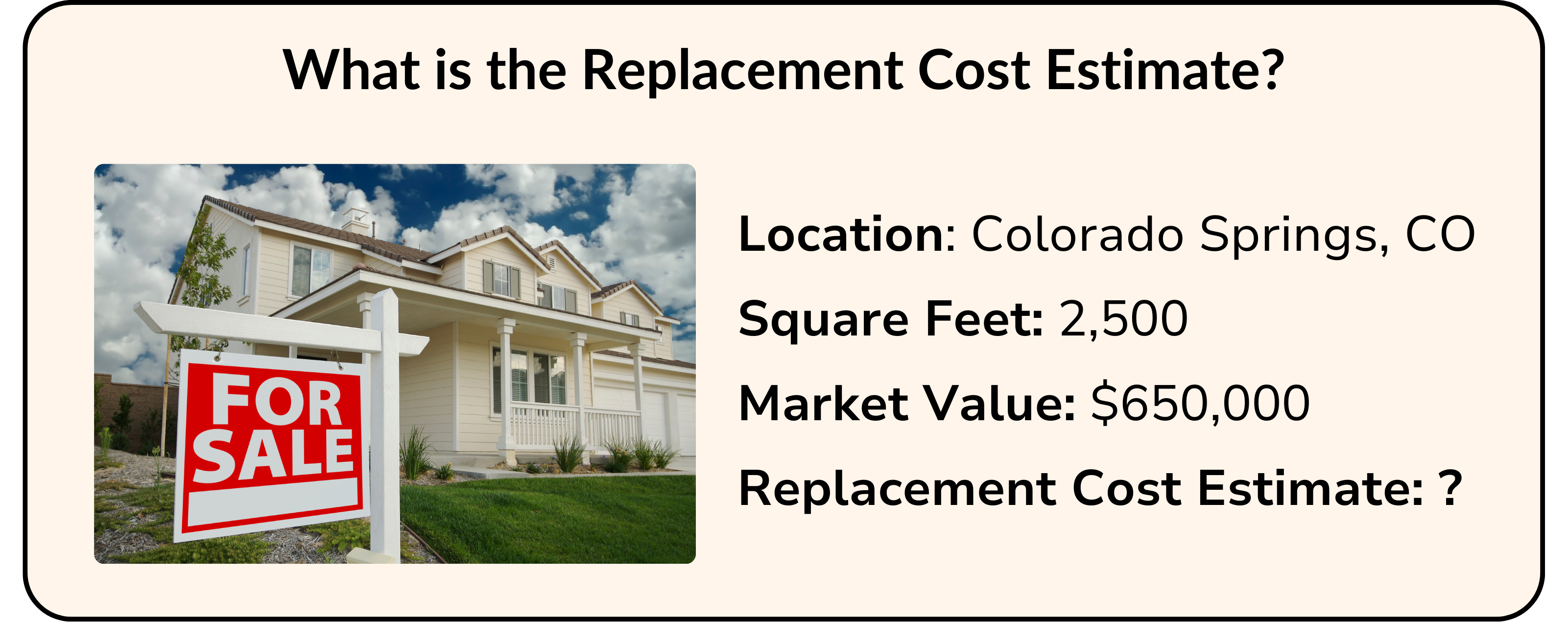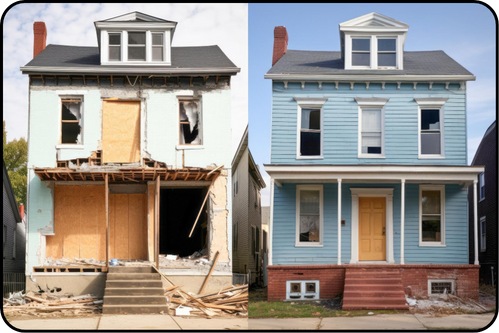
Understanding "Replacement Cost" in Home Insurance
Disclaimer: The content on our blog is intended for general informational and educational purposes only and should not be considered a substitute for professional advice. Insurance needs vary widely, and because insurance companies and policies differ, readers should consult with their insurance agent for personalized guidance. While we strive for accuracy and regularly update our content, we cannot guarantee its completeness or timeliness. HonestFlow is not responsible for any actions taken on insurance policies based on the information provided on our blog.
Understanding "Replacement Cost" in Home Insurance

Home insurance policies often contain complex terms, but 'Replacement Cost' is one every homeowner should understand. Insurance helps mitigate the financial impact of unexpected losses, making it essential for policyholders to understand their coverage to avoid significant out-of-pocket repair costs. This blog explains what Replacement Cost coverage includes, how it applies to home insurance, and how HonestFlow can help you find tailored home insurance coverage.
What is Replacement Cost Coverage?
Replacement cost refers to the amount required to replace or rebuild your property with materials of similar kind and quality, without any deduction for depreciation. This differs from actual cash value coverage, which factors in depreciation when settling claims.
Why Understanding Replacement Cost Coverage is Important
Homeowners seeking broader coverage may prefer replacement cost coverage, as it does not account for depreciation. Depreciation can significantly reduce the payout of a claim. By choosing replacement cost coverage, the value of protection can be maintained over time. Additionally, understanding replacement cost coverage helps set realistic expectations about the potential compensation from your insurance provider in the event of a loss due to covered perils.
How Replacement Cost Applies to Home Insurance
Replacement cost coverage can apply to various areas of your home insurance policy. This section will examine how replacement cost coverage applies to the Dwelling and Personal Property coverage.
Dwelling Coverage

Dwelling coverage, also known as Coverage A, helps protect the structure of your home, including walls, roof, and flooring. Do you know how much it costs to rebuild your home from scratch? The replacement cost estimate provides a basis for calculating the cost to rebuild your home. Many mortgage lenders require that this coverage meets or exceeds the replacement cost estimate to help ensure adequate protection. Our blog, "Understanding The Replacement Cost Estimate," explores factors influencing these estimates and how they are calculated.
It's important to understand that the replacement cost estimate can fluctuate due to external factors like inflation, which increases the cost of labor and materials. Fortunately, many home insurance companies offer endorsements that specifically extend dwelling coverage for these additional repair costs. Our blog, "Dwelling Endorsements," highlights common endorsements that increase dwelling coverage to account for potential increases in the home's rebuilding costs.
Personal Property Coverage

Personal Property coverage, also known as Coverage C, helps protect your belongings, such as electronics, clothing, and furniture. Most policies default to covering personal property at actual cash value, meaning claim settlements are typically based on the item's current value, factoring in depreciation.
Fortunately, many insurance companies offer endorsements that apply replacement cost coverage to personal property. Our blog, "Personal Property Replacement Cost Endorsement," explains the benefits of this endorsement in more detail. Additionally, many high-value items typically have sub-limits of coverage. This is important to consider because, although the general personal property limit may seem sufficient to replace your belongings, certain items like electronics, jewelry, and artwork may be limited to a fractional amount. Our "Scheduled Personal Property" endorsement guide explains options to extend coverage for personal property with limited coverage.
Key Considerations - Replacement Cost
Replacement Cost Estimate (RCE) vs. Market Value

In home insurance, it's crucial to understand the difference between the replacement cost estimate and the market value. While many homeowners are familiar with their property's market value, this figure includes factors like property taxes that are unrelated to home's repair costs. A replacement cost estimate (RCE) strictly accounts for the cost to rebuild your home from scratch. Understanding these terms is essential when evaluating the Dwelling Coverage (Coverage A) limit, as basing this on market value can result in sub-optimal coverage. Work with your insurance agent to evaluate your home's RCE and receive tailored coverage recommendations to adequately protect your home.
Dwelling Replacement Cost

While a policy may include replacement cost coverage, it doesn't ensure the insurance company will cover the full amount to replace your home. Although replacement cost coverage excludes depreciation, the policy limits must still cover repair costs. If these costs exceed the dwelling limit, the policyholder bears the additional expenses, which can be financially burdensome. As the Replacement Cost Estimate (RCE) can change, additional dwelling coverage might be needed to account for rising building costs. Many home insurance companies offer dwelling endorsements to increase dwelling coverage for such scenarios. For more details, explore how the RCE can change and common dwelling endorsements.
Personal Property Replacement Cost

Depending on your home insurance policy, personal property is either covered at actual cash value (ACV) or replacement cost (RC). Some insurance companies require you to purchase an endorsement to protect personal property at replacement cost, while others may include this automatically. Even with replacement cost coverage, there can be limitations on fully replacing damaged items. For instance, many home insurance policies have specific coverage limits for high-value items, which can be significantly lower than the overall personal property limit. To increase coverage for items with limited coverage, policyholders typically need to endorse higher coverage limits through a scheduled personal property endorsement. It's important to confirm with your agent if your personal property has any limitations, even with replacement cost coverage.
Solutions with HonestFlow
Understanding terms like replacement cost is critical to navigating your policy and comparing options effectively. The best approach to finding a home insurance policy that meets your needs, is to work with dedicated agents who can assess your home's replacement cost estimate, identify potential coverage gaps, and provide personalized coverage recommendations.
If you're in the market for home insurance, HonestFlow connects insurance shoppers with verified insurance agents who can navigate your policy options, including the application of replacement cost coverage. HonestFlow shoppers decide how many agents you receive quotes from, providing a personalized and controlled shopping experience. Additionally, HonestFlow shoppers receive our exclusive shopping tools, including our "Questions to Consider" guide, after completing their quote request. If you're ready to explore your home insurance options, experience a better way to shop for home insurance with HonestFlow!

Questions To Consider - Replacement Cost Coverage
At HonestFlow, we believe that selecting the best insurance policy goes beyond finding the lowest premium; it's about getting the right coverage for the best rate and understanding what your policy actually covers. To support our shoppers, we provide our "Questions To Consider" guide, empowering them with questions to consider when navigating coverage options with their agents. Below, we've listed several questions to consider regarding replacement cost coverage. If you're ready to find home insurance quotes and receive our "Questions To Consider" guide, request home insurance quotes with HonestFlow! Not ready to shop? Learn more about the benefits of shopping with HonestFlow here.
1. Does my policy include replacement cost coverage for both my dwelling and personal property?
Confirm whether your policy covers the full replacement cost for both your dwelling and personal belongings. Knowing this will help you understand the extent of your coverage and identify any potential gaps.
2. What is the replacement cost estimate for my home?
Understanding the replacement cost estimate is crucial as it determines the amount needed to rebuild your home with similar materials and quality. Ask your agent how this estimate is calculated and if it is updated regularly to account for changes in construction costs.
3. What happens if the cost to rebuild my home exceeds the dwelling coverage limit?
The replacement cost estimate can change, and its important to understand the implications if rebuilding costs exceed your coverage limits. Ask if your insurer offers dwelling endorsements that can provide additional financial protection in these scenarios.
4. Are there any limitations or sub-limits on my personal property coverage?
Personal property coverage often has sub-limits for high-value items like electronics, jewelry, and artwork. Ask about these limits to ensure your valuable items are adequately protected, and discuss options for additional endorsements if necessary.
5. How often should I review and update my replacement cost coverage?
Regularly reviewing your coverage with your agent helps ensure it remains adequate over time. Discuss the recommended frequency for reviews and any specific life events or changes in your property that should trigger a review.
©️ 2024 HonestFlow LLC. All Rights Reserved

